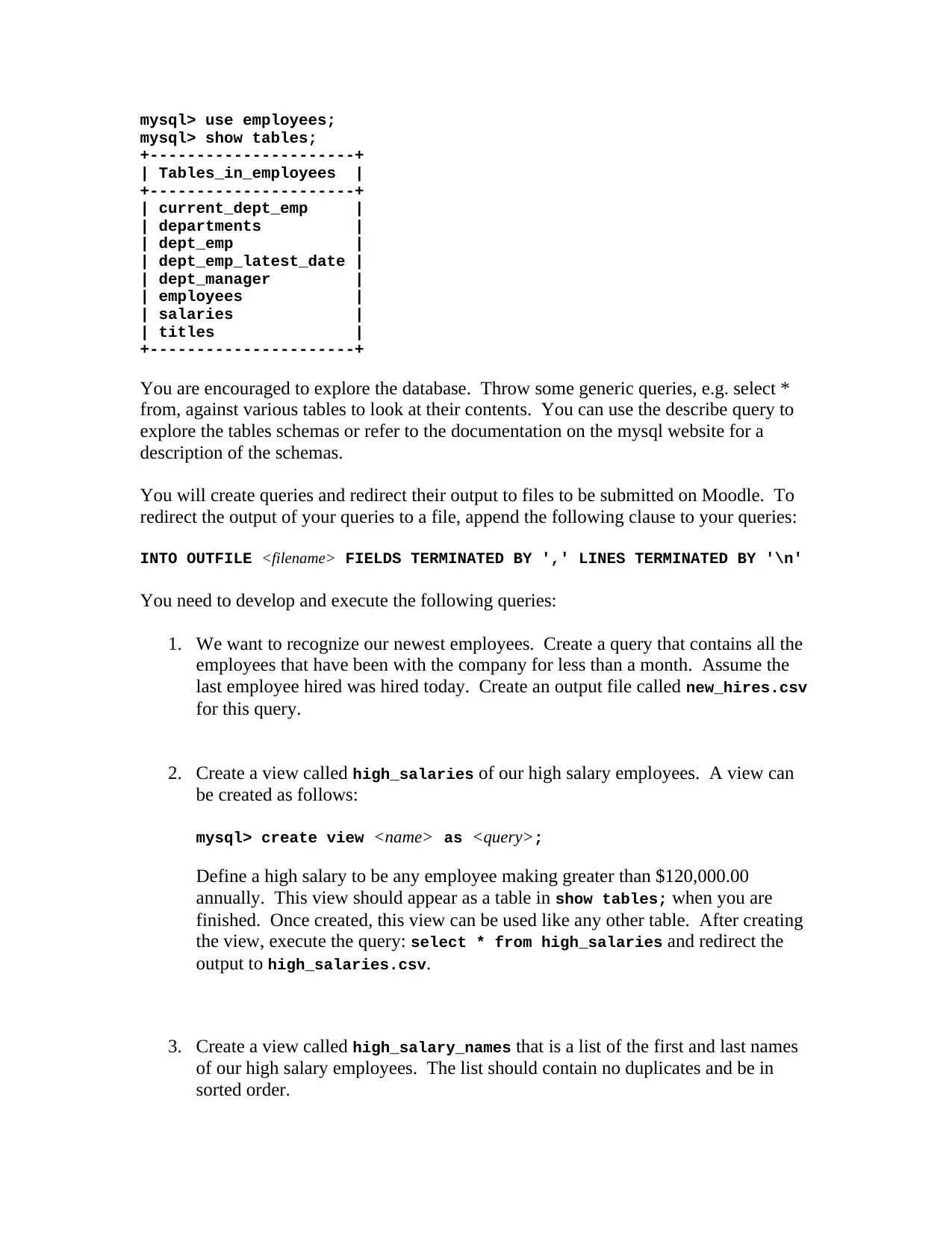CS 340: MySQL Database Assignment - Query Creation and Output
VerifiedAdded on 2019/09/22
|3
|742
|304
Homework Assignment
AI Summary
This assignment focuses on introducing students to MySQL database operations using a sample employee database. The task involves installing the employee database, exploring its contents, and creating SQL queries to extract specific information. Students are required to write three distinct queries: one to identify new hires within the last month, another to create a view of high-salary employees, and a third to create a view listing the first and last names of high-salary employees, sorted and without duplicates. Each query's output must be redirected to a CSV file. Finally, the student must compile all queries into a text file and package all generated files into a tarball for submission. The assignment emphasizes practical application of SQL commands, view creation, and data export techniques within a MySQL environment.
1 out of 3










![[object Object]](/_next/static/media/star-bottom.7253800d.svg)